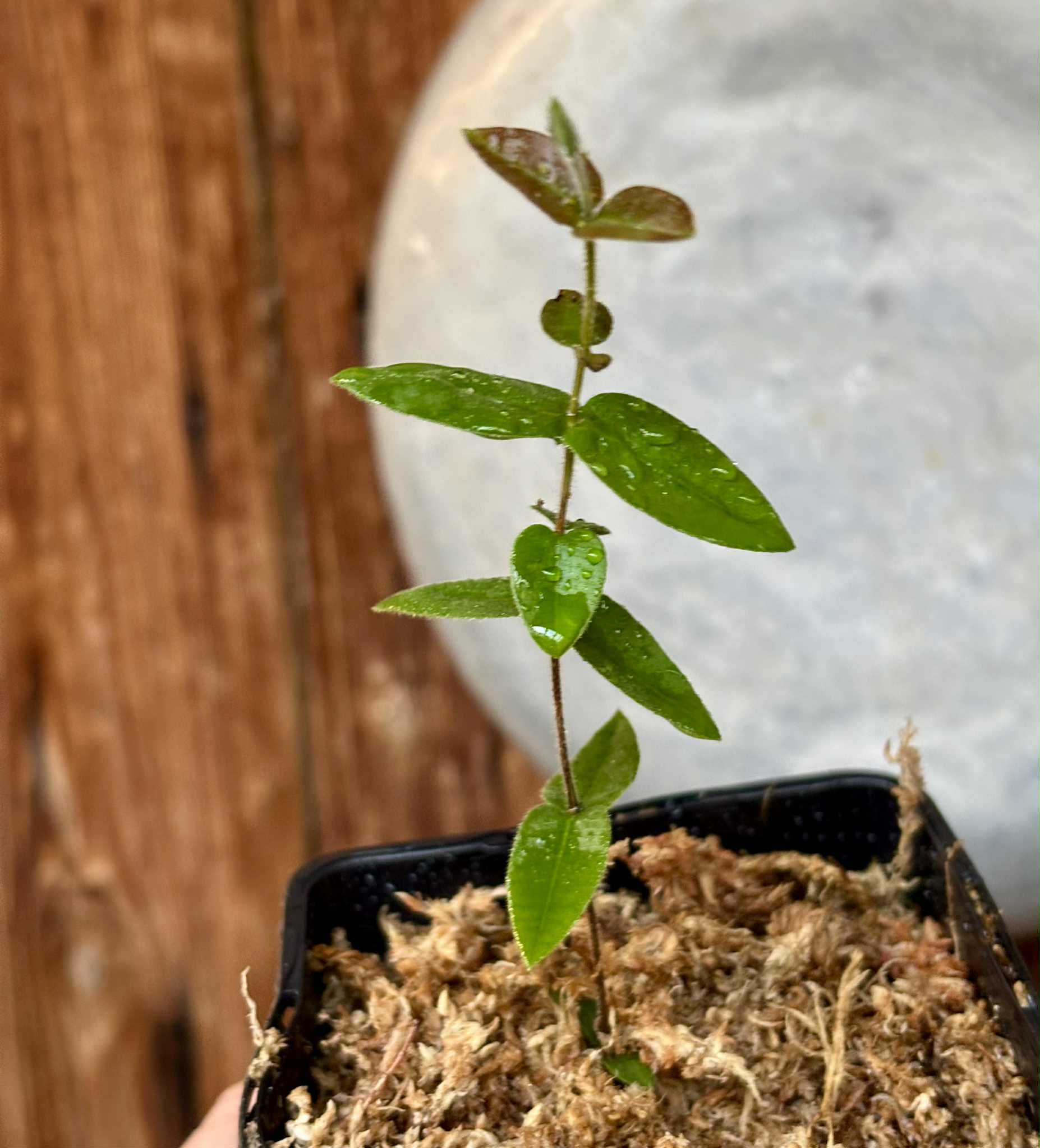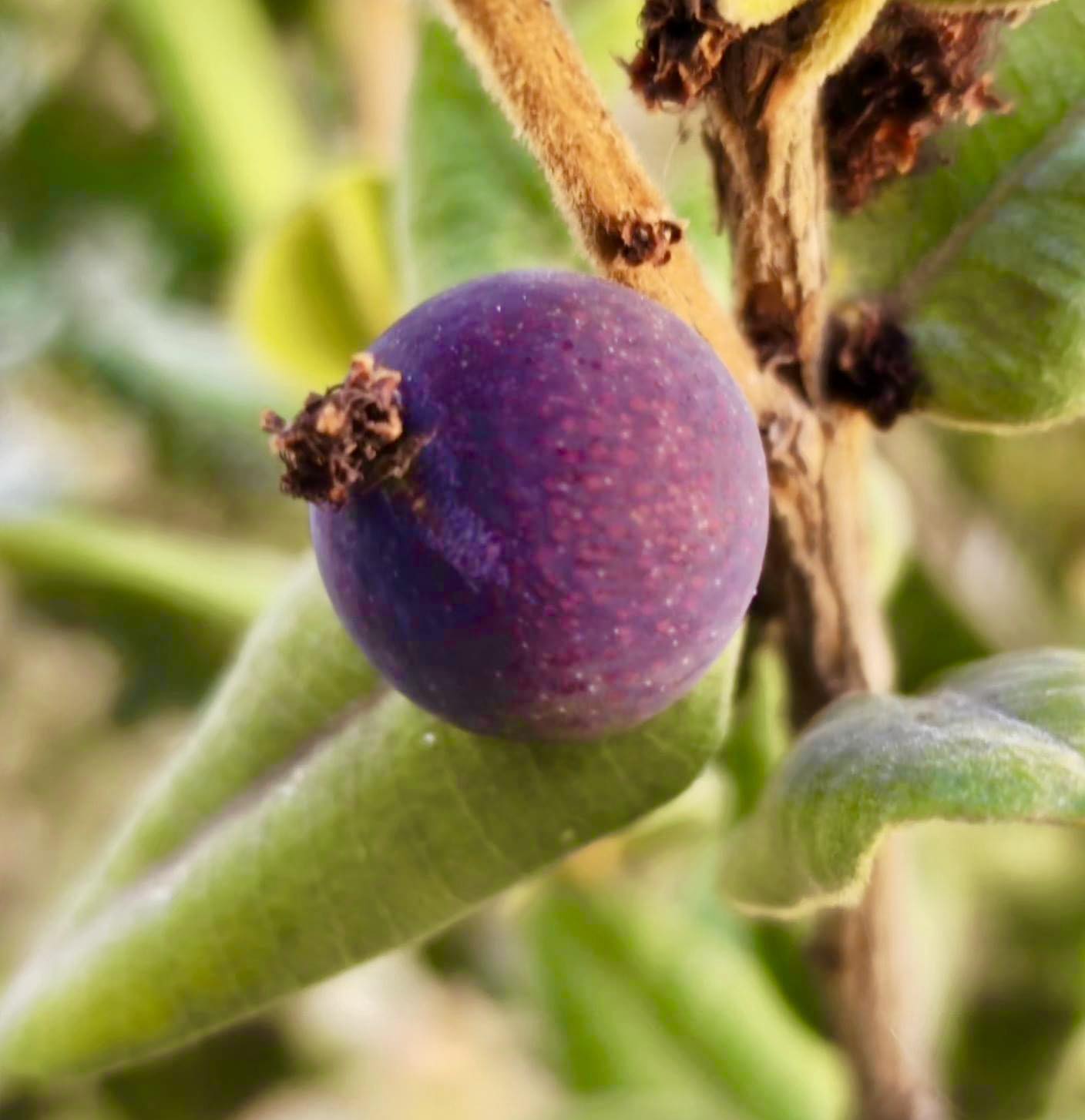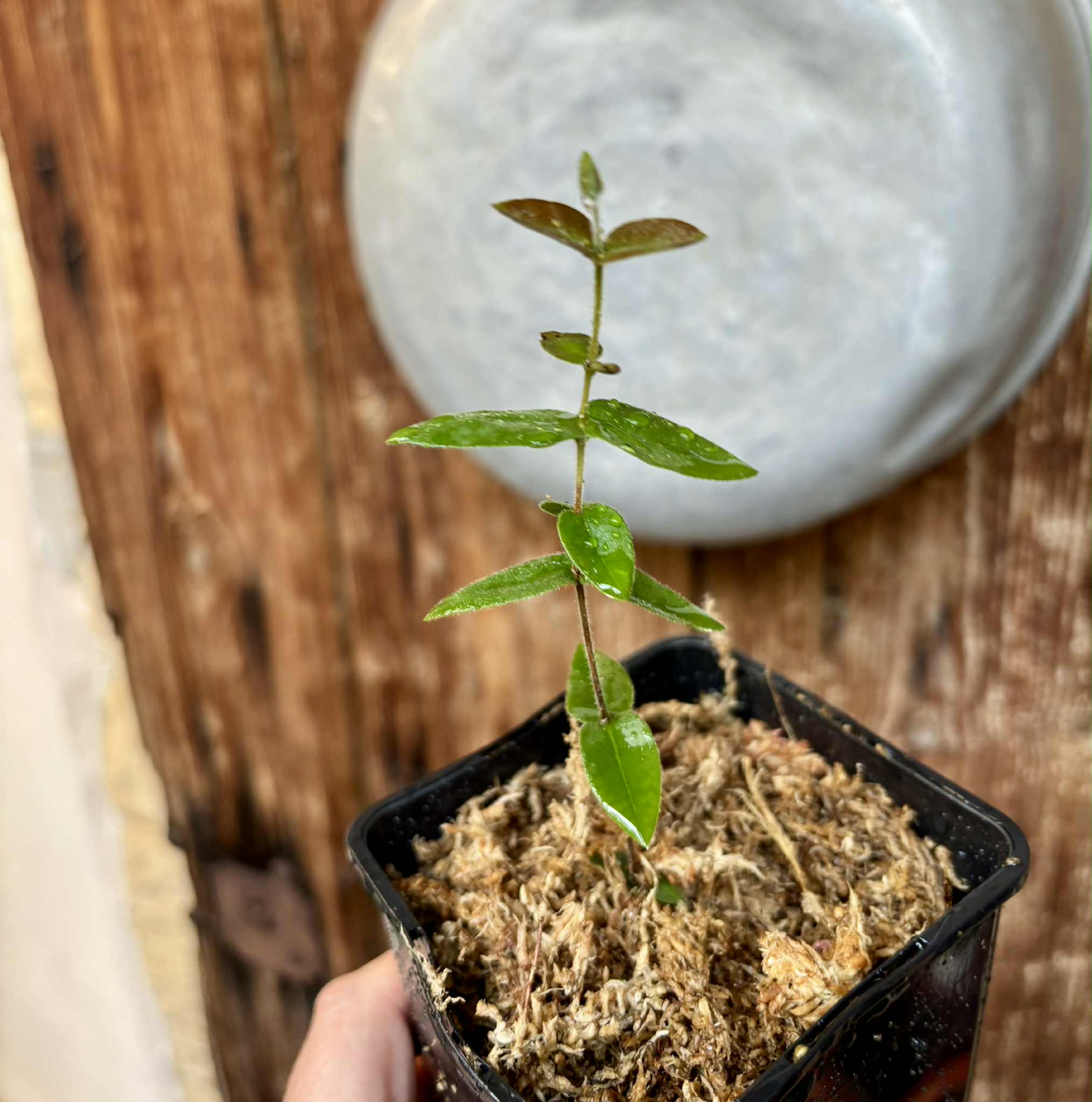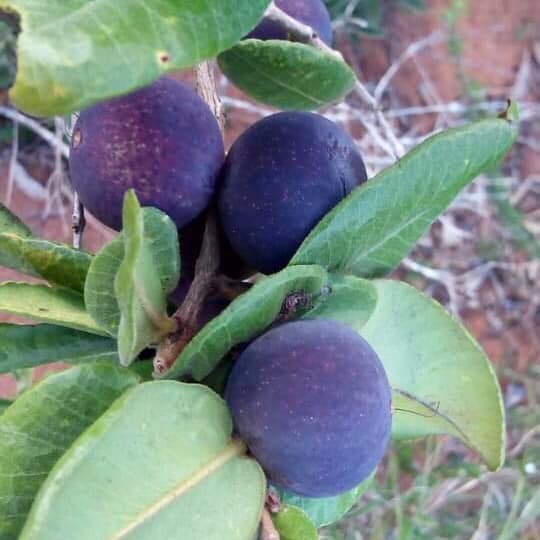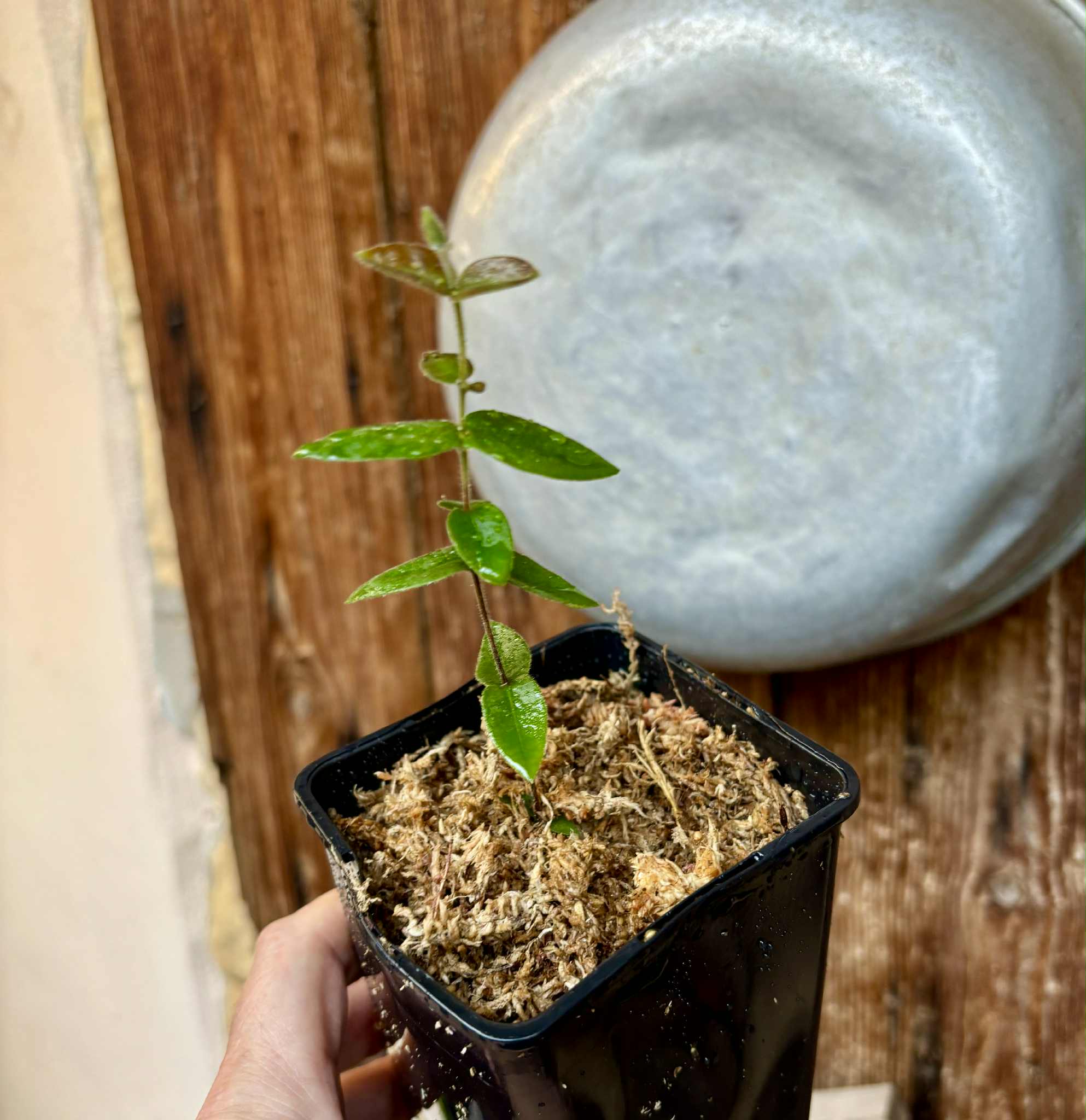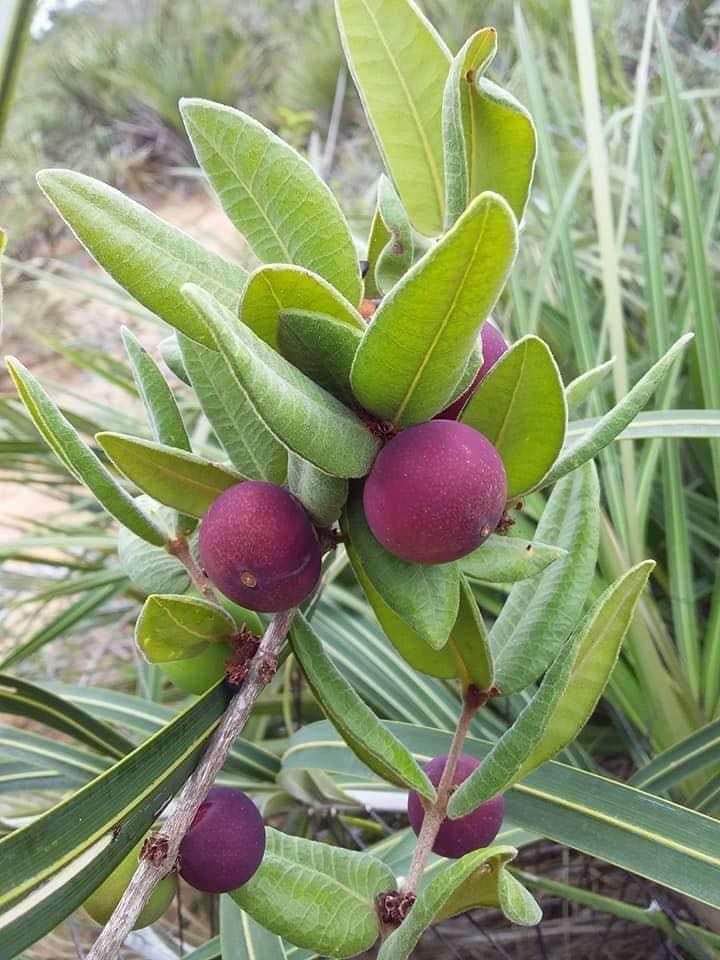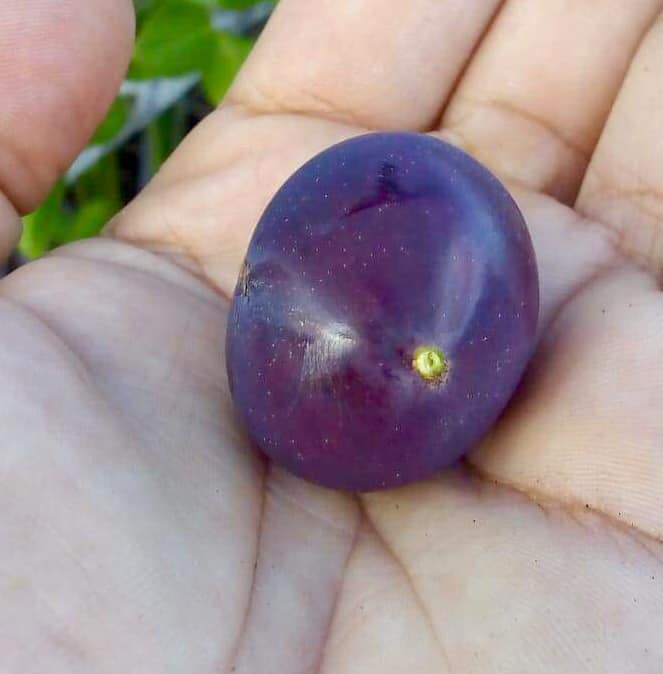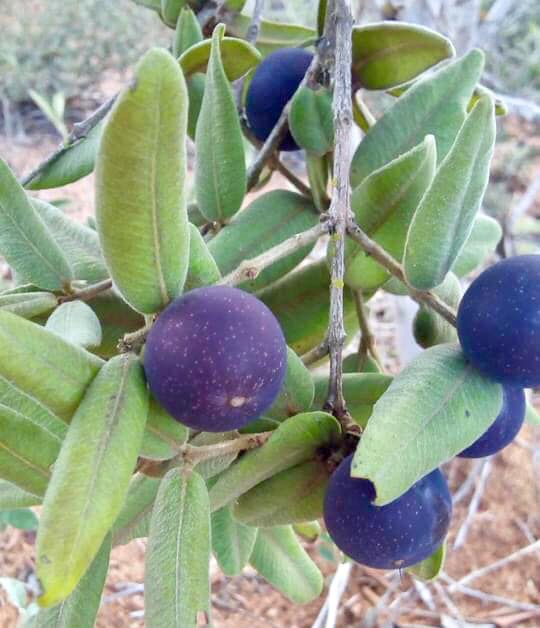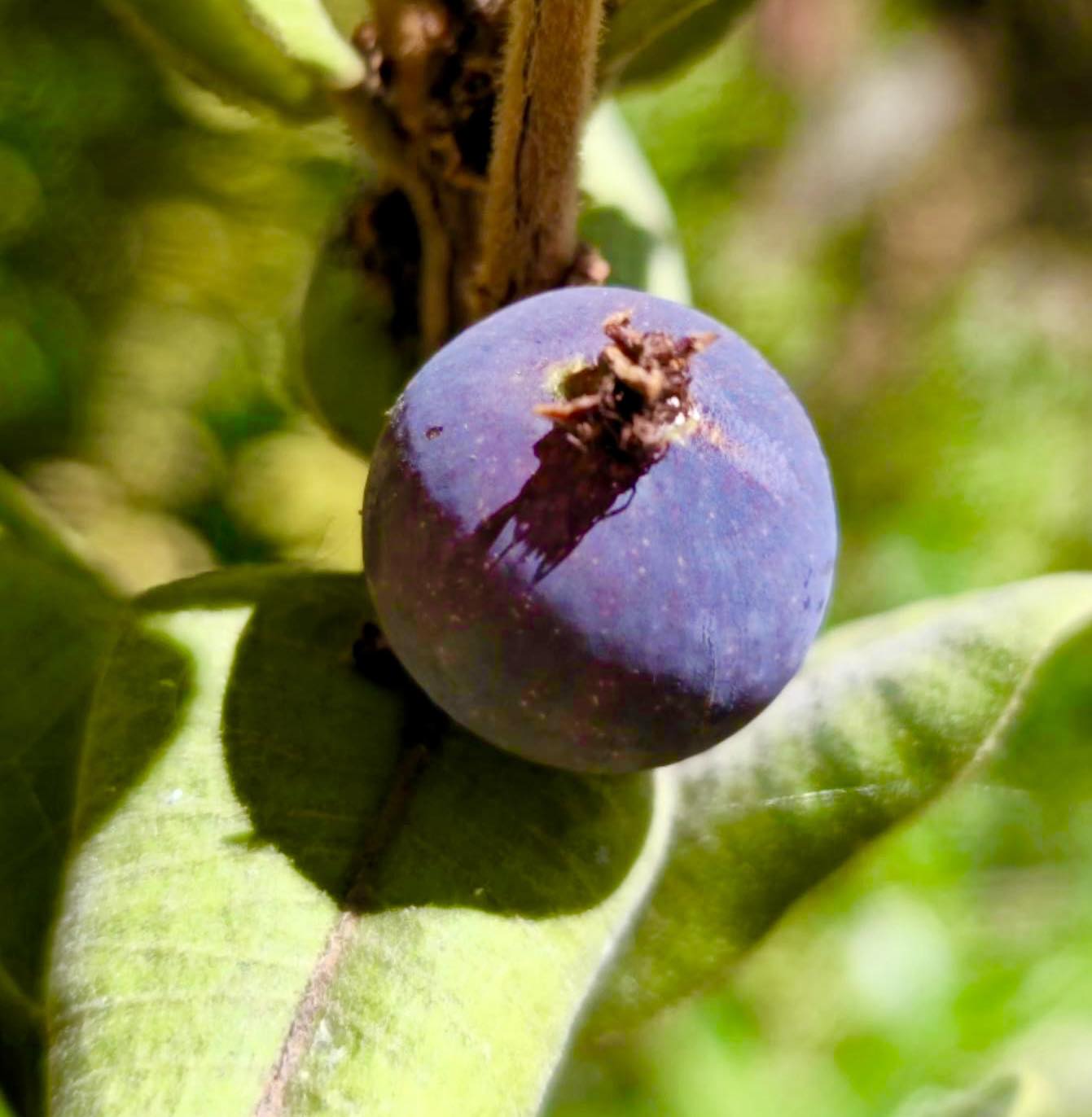Myrciaria caerulescens (Roxa - Blue Guaquiea) - 1 potted seedling / 1 kleiner, getopfter Sämling
19,00 €*
% 26,00 €* (26.92% saved)Available, delivery time: 1-2 Wochen
Myrciaria caerulescens (Roxa - Blue Guaquiea)
Family / Familie: Myrtaceae
origin from / Herkunft: Brasil / Brasilien
Climate / Klima: temperate to warm (15-30C / 59-86F) / gemäßigt bis warm (15-30C / 59-86F)
Use / Verwendung: edible fruits, juice, jam, ice cream, etc. / essbare Früchte, Säfte, Marmelade, Eis usw.
you buy / sie kaufen: 1 potted seedling / 1 kleiner, getopfter Sämling
Delivery EU only
Important Note
This plant can grow for over two years in sphagnum moss alone. After about two years, the sphagnum moss decomposes and slowly turns into soil.
This gives the roots time to slowly adapt to the soil components, allowing the plant to continue growing quickly and without problems.
It is now about six months old and can therefore be grown in pure sphagnum moss for at least another year.
Introduction
Myrciaria caerulescens – formerly known as Myrciaria sp. roxa or Blue Guaquiea – is a fascinating discovery among exotic fruit plants.
In 2024, it finally received its scientific name.
The flavor of its fruits is said to even surpass the popular Jaboticaba.
Origin and Location
The plant is native to the Caetité region in the Brazilian state of Bahia, where a warm climate and a pronounced dry season prevail.
The soil there is rich in iron and contains a lot of quartz sand.
Cultivation and Care
Fertilization: No fertilizer required or recommended.
Light: A bright location without direct midday sun is ideal.
Temperature: Overwinter at least 15°C.
Growth: Slow growth initially; later, a compact shrub, very suitable for container cultivation.
Special Characteristics
Fruit: Excellent flavor – even better than Jaboticaba.
Please overwinter this plant at least 10°C.
Wichtiger Hinweis
Diese Pflanze kann über zwei Jahre nur in Sphagnum Moos wachsen. Nach ungefähr 2 Jahren verrottet das Sphagnum Moos und wird langsam zu Erde.
Dadurch haben die Wurzeln Zeit sich langsam an die Bestandteile der Erde zu gewöhnen und die Pflanze wird zügig und ohne Probleme weiter wachsen.
Sie ist jetzt ca. 6 Monate alt und kann daher noch für mindestens 1 Jahr in reinem Sphagnum Moos gezogen werden.
Einführung
Die Myrciaria caerulescens – früher bekannt als Myrciaria sp. roxa oder Blue Guaquiea – ist eine faszinierende Entdeckung unter den exotischen Fruchtpflanzen.
Im Jahr 2024 erhielt sie endlich ihren wissenschaftlichen Namen.
Der Geschmack ihrer Früchte soll die beliebte Jaboticaba sogar übertreffen.
Herkunft und Standort
Die Heimat der Pflanze ist die Region Caetité im brasilianischen Bundesstaat Bahia, wo ein warmes Klima und eine ausgeprägte Trockenzeit herrschen.
Der Boden dort ist eisenhaltig und enthält viel Quarzsand.
Kultur und Pflege
Düngung: Kein Dünger erforderlich oder empfohlen.
Licht: Ein heller Standort ohne direkte Mittagssonne ist ideal.
Temperatur: Überwinterung bei mindestens 15 °C.
Wachstum: Anfangs langsames Wachstum; später kompakter Strauch, sehr gut für die Kübelkultur geeignet.
Besondere Eigenschaften
Frucht: Hervorragender Geschmack – noch besser als Jaboticaba.
Bitte diese Pflanze bei mindestens 10 Grad überwintern.

